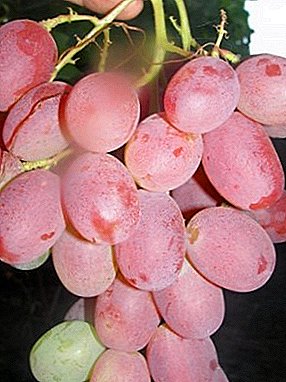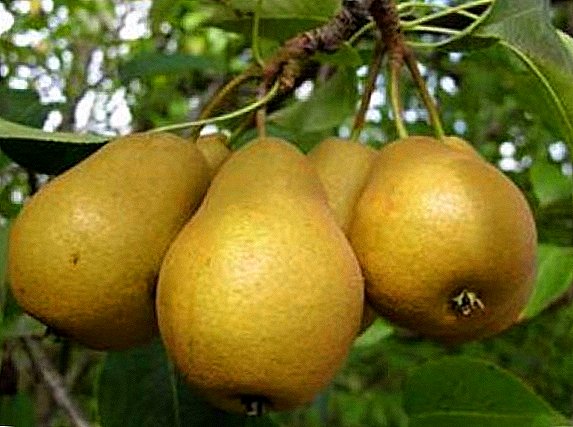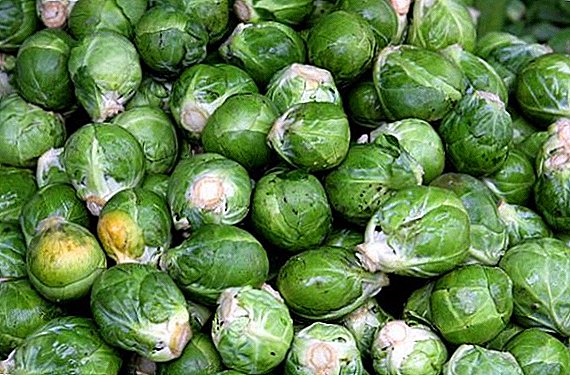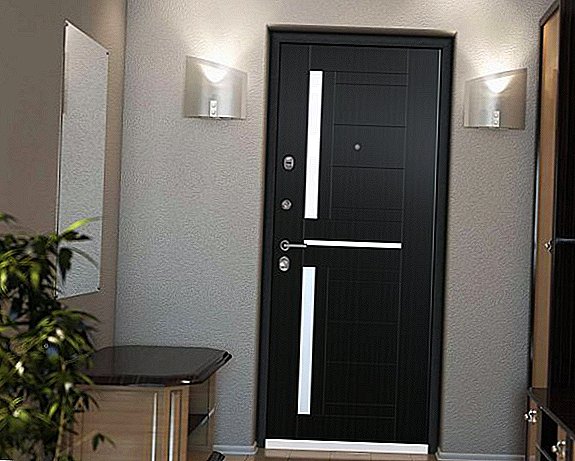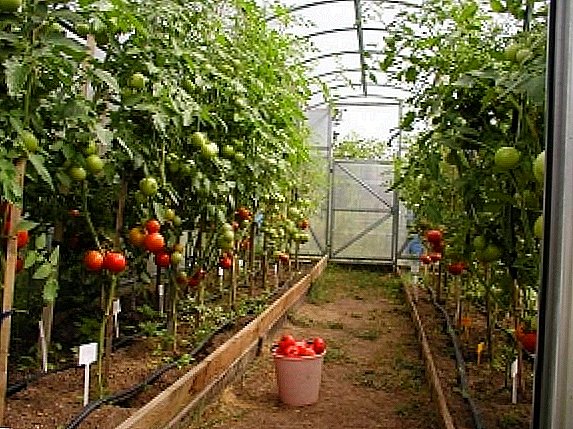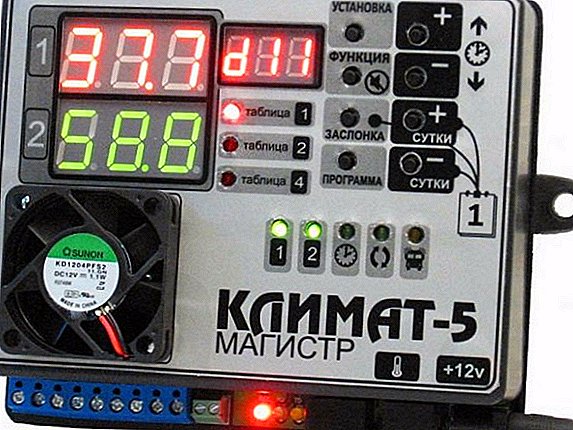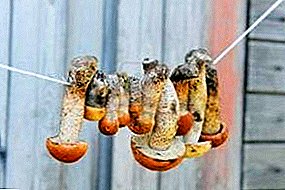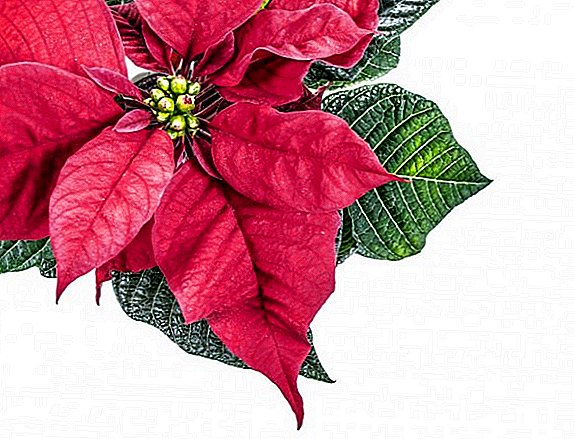Poinsettia: description of the shrub
 Poinsettiaalso known as the Christmas star, beautiful spurge, beautiful euphorbia is a shrub evergreen with gorgeous red, yellow, pink or white bracts that is becoming increasingly popular as a houseplant because it blooms in the winter months, decorating living areas under the New Year and Christmas.
Poinsettiaalso known as the Christmas star, beautiful spurge, beautiful euphorbia is a shrub evergreen with gorgeous red, yellow, pink or white bracts that is becoming increasingly popular as a houseplant because it blooms in the winter months, decorating living areas under the New Year and Christmas.
Did you know? There are many legends associated with poinsettia. The Aztecs believed that a bush, covered in mid-winter with bright purple leaves, like stars, sprouted from a drop of blood that fell to the ground from the heart of their ancient goddess, broken by unhappy love. Another story says that poor children, who had nothing to decorate the altar in the temple at Christmas, picked some ordinary shrubs and laid them at Jesus' feet. And these branches suddenly bloomed.
 In nature, poinsettia is a fairly high, up to four meters shrub, growing in the southern and central regions of the North American continent. It has stems that are even and hollow inside and beautiful toothed leaves of dark green color.
In nature, poinsettia is a fairly high, up to four meters shrub, growing in the southern and central regions of the North American continent. It has stems that are even and hollow inside and beautiful toothed leaves of dark green color.
Small yellow flowers are located in bright bracts, similar in shape and size to the foliage. It is the bracts that are necessary for normal pollination of plants, give it a charm and originality.
In order for the poinsettia to start flowering, it must be in the dark for most of the day for some time, it is this feature that explains the fact of its flowering on New Year's Eve.
The bracts of the plant begin to change color with an increase in the dark time of day, becoming red or (in some species) white, pink or yellow, resembling the heavenly bodies, which gave the plant one of its many names.
Poinsettia blossoms in nature for no more than two months a year, but breeders at home managed to extend this period to six months. After that, the bracts lose their brightness and die off, and at the poinsettia there comes a period of rest.
Important! Like all euphorbia, poinsettia is dangerous for pets, especially for cats, which often nibble indoor flowers. Despite the fact that many researchers dispute this assertion, it is better to refrain from experimentation. If there is a cat in the house or there are small children, the poinsettia should be removed away.
Poinsettia Pot Selection
 Before planting poinsettia, it is necessary to determine the pot. It should be chosen so that it is 2-2.5 times smaller than the plant itself, and its diameter is as many times as large as the root ball.
Before planting poinsettia, it is necessary to determine the pot. It should be chosen so that it is 2-2.5 times smaller than the plant itself, and its diameter is as many times as large as the root ball.
The plant does not impose special requirements on the height and width of the pot; it is important that the container is not too large.
The fact is that the larger the pot, the slower the soil dries it, so it will be uncomfortable not to tolerate excessive moisture poinsettia in a too voluminous pot.
Choosing a place for poinsettia
Poinsettia is very light-requiring, but the light for this plant needs diffused. In summer, the pot should be placed on sunny windowsills or open balconies, providing shading from direct rays and drafts.
If the flower is in open space, you need to make sure that it is not flooded with rain, poinsettia does not tolerate excess moisture. Indoors another subtlety: poinsettia needs regular airing.
Since the beginning of autumn to ensure flowering, proper lighting is of particular importance. As you know, in order for poinsettia to blossom, it should be in complete darkness for at least half a day, so as soon as the light day comes to an end, the plant should be immediately removed in a dark place or covered with an opaque dark film.
 In the morning the film is removed - and so on until the New Year. Otherwise, the plant will go "in the leaf", and flowering may not occur at all. Properly sustained mode of lighting allows poinsettia after a couple of weeks after darkening start to throw out flower buds, and later - bracts.
In the morning the film is removed - and so on until the New Year. Otherwise, the plant will go "in the leaf", and flowering may not occur at all. Properly sustained mode of lighting allows poinsettia after a couple of weeks after darkening start to throw out flower buds, and later - bracts.
The temperature of the air during the flowering period of the poinsettia should not fall below 14 ° C; during the rest period a couple of degrees, the temperature can be lowered. In summer, the plant develops normally within 18 - 25 ° C.
Rules for buying poinsettia
In order for the plant to be pleasing to the eye and look healthy, when buying, it is necessary to remember some subtleties of the choice of poinsettia. First you need to make sure that the flowers have no pollen and have not yet turned yellow (they should be reddish or greenish), otherwise admiring how poinsettia blooms, you will not be at all for long, as the bloom has already entered its full phase.
On the contrary, bracts should have a pronounced color, the admixture of greenery on them indicates that the plant is not healthy. The plant should be symmetrical and evenly covered with leaves so that it looks equally beautiful on all sides. The presence of bare plots - a reason to stop the choice on another instance.
 The leaves of the plant must be fresh and juicy, without any signs of pests. Yellowness, torsion, lethargy is a bad sign.
The leaves of the plant must be fresh and juicy, without any signs of pests. Yellowness, torsion, lethargy is a bad sign.
Pay attention to the ground in a pot. If it is too dry or, on the contrary, too wet, the roots of the plant may be weakened and should not be bought.
In favor of the store will testify the fact that the poinsettia put up for sale without packaging and not pressed against each other. The plant tolerates cramping very poorly. In any case, do not buy this plant in the cold season on the street.
Planting and reproduction of poinsettia
Poinsettia can multiply by seed and grafting, but the first method is more characteristic of the natural conditions of growth of this shrub. As a room flower, poinsettia is usually bred by cutting and then transplanting into large containers.
Seed method
In the wild, after the end of the flowering period, euphorbia produces seeds that, when scattered, give life to new plants. Such material is very difficult to obtain with the artificial method of breeding poinsettia, moreover, the most beautiful varieties of this plant are the result of many years of breeding work, while the seeds, unfortunately, do not retain the acquired traits, and wild plants grow from them.
 It is not so beautiful, more poisonous than the cultivated varieties, therefore, it is not only senseless but also dangerous to propagate the Christmas star in the seed way. Thus, poinsettia does not leave flower growers much choice as to how to plant it.
It is not so beautiful, more poisonous than the cultivated varieties, therefore, it is not only senseless but also dangerous to propagate the Christmas star in the seed way. Thus, poinsettia does not leave flower growers much choice as to how to plant it.
Vegetative method
In order to propagate poinsettia with a cutting, from a young shoot of an adult, but not an old plant, it is necessary to cut off a tip about 7 cm long with visible buds (there should be at least three, preferably five to six). Trimming is carried out under the bottom node.
The cutting should be soaked in warm water for a few minutes, put into the solution of the scavenger, and then blotted on the cut and sanitized (ordinary activated charcoal can be used for this purpose).
Processed shoots are planted in a well-moistened soil with the addition of humus, manure and sand.
Important! If the graft is buried into the ground deeper than a centimeter, rooting will not occur, and the lower part of the shoot will simply rot!
 The pot is covered with a film and placed in a very warm and bright, but pritennoe from the direct sun rooting. Do not forget to regularly air and spray cuttings. Roots appear in about a month. As the plant grows, it is transshipped to a larger container and clamped to give a poinsettia of a luxuriant shape.
The pot is covered with a film and placed in a very warm and bright, but pritennoe from the direct sun rooting. Do not forget to regularly air and spray cuttings. Roots appear in about a month. As the plant grows, it is transshipped to a larger container and clamped to give a poinsettia of a luxuriant shape.
If the plant is planted correctly, it begins to bloom next year.
Planting and transfer technology
It is necessary to plant and transplant poinsettia at the end of the rest phase, around mid-may.
At the bottom of the pot selected for transplanting (it should not be much larger than the former), a thick layer of drainage is laid. If the plant does not overload, namely it is transplanted, then before placing it in a new pot, its roots should be examined, cutting off dried or rotting branches, and then lightly sprinkled with potassium humate or Kornevin.
With this treatment, the plant will transfer the housewarming more easily. You can create a poinsettia impromptu greenhouse, covering the plant package. It is very important at least twice a day to remove the film to provide fresh air access to the flower. Moisture droplets should not accumulate inside the bag. 
You can remove the package a few weeks after transplantation, by this time the poinsettia should have completely recovered from the stress.
Growing poinsettia
Watering poinsettia
Water poinsettia should be quite abundant, especially in summer, as the soil in the pot dries. If the poinsettia has withered, it usually indicates a lack of moisture, but the plant also does not tolerate overflow. It should be remembered: in the dormant period, poinsettia hardly needs watering.
Fertilizer and dressing
Fertilize and feed the poinsettia should be at the end of the rest period, the plant has gained enough strength for the upcoming flowering. You can use any organic and mineral fertilizers intended for flowering plants, but in September - October, before preparing the plant for flowering, special attention should be paid to phosphorus and potassium supplements. Feeding can be done every two weeks.
Important! Just transplanted plants can not be fertilized! Not less than a month, it should be watered without any additives.
Poinsettia Formation
 In order for the plant to quickly form a magnificent bush, after flowering, it is transplanted into a larger pot and not cut. However, there is a nuance: actively growing, poinsettia with this method of transplantation will never bloom. So before the rest period comes, trim poinsettia is still necessary.
In order for the plant to quickly form a magnificent bush, after flowering, it is transplanted into a larger pot and not cut. However, there is a nuance: actively growing, poinsettia with this method of transplantation will never bloom. So before the rest period comes, trim poinsettia is still necessary.
The second stage of formation begins at the moment when poinsettia comes out of hibernation. As soon as new sprouts appear on the plant, it is examined and 4-5 of the strongest shoots are selected, others are cut with a sharp knife. As a result, the plant forms a beautiful and lush, but at the same time neat crown, giving the flower a decorative look.
Poinsettia after flowering
After the New Year, in garbage cans, unfortunately, it is possible to observe in abundance not only discarded Christmas trees, but also pots with dried poinsettia. You can, of course, treat this plant as a one-time element of the New Year holidays, each time buying a new copy, but this is hardly humane and productive.
Do not be upset that poinsettia has faded, it is only important to know what to do so that by next winter it will again look like a Christmas star.
 When fading off, poinsettia enters the resting phase necessary for the plant. It does not last long - just a couple of months. Poinsettia usually sheds leaves before hibernating. - This is not a sign of disease and not a reason for panic.
When fading off, poinsettia enters the resting phase necessary for the plant. It does not last long - just a couple of months. Poinsettia usually sheds leaves before hibernating. - This is not a sign of disease and not a reason for panic.
The plant should be cut, leaving several strong shoots (cut shoots can be used as cuttings for propagation). The flower itself must be placed in a cool, dry place, protected from direct sunlight. During this period, watering the plants is reduced to a minimum.
After the resting phase, a period of growth begins at the poinsettia. The plant is plentifully watered and gently rolled over into a new pot (a little more than before). Now the poinsettia needs full care - watering and regular feeding.
Poinsettia Pests and Diseases
The main enemy of poinsettia is considered whitefly - a tiny insect similar to a white mole, settling on the underside of a leaf plate. In small quantities, it does not cause serious damage to the plant, but it is important to destroy the peddler until the problem becomes serious. The flower should be gently washed under running water (shower), then spray the leaves on both sides with a solution of insecticidal soap.
If the air in the room is too dry, poinsettia can attack spider mites. They are almost imperceptible by themselves, but the leaves damaged by them from the tips are covered with small yellow spots, which is the reason for emergency intervention. The presence of a tick is also indicated by the web on the plant. The same countermeasures are sprayed with insecticidal soap.
 Dangerous to poinsettia pest are also mealybugs. Fortunately, they are large enough to be noticed with the naked eye in time. Often tolerated by ants. In addition to the soap solution mentioned, this pest can also be controlled by treating the poinsettia with an alcohol solution.
Dangerous to poinsettia pest are also mealybugs. Fortunately, they are large enough to be noticed with the naked eye in time. Often tolerated by ants. In addition to the soap solution mentioned, this pest can also be controlled by treating the poinsettia with an alcohol solution.
It should be mentioned such a pest as mushroom mosquito - brown winged midge the size of a few millimeters. The larvae of this insect feed on the roots of the plant, causing considerable damage to it. Treatment with soapy water, as a rule, gives a positive result.
Did you know? Poinsettia among many nations symbolizes joy and fun in the house. It is believed that in order for the plant to promote friendly companionship of the household, it should be placed in rooms where people gather - in the living room or in the kitchen. In addition, according to beliefs, this flower helps to find one’s self and forms both mental and emotional development of a person. Finally, this amazing euphorbia is called the flower of youth, beauty and health.
With all its amazing beauty and unusual poinsettia easily grown and blooms annually in the home, you just need to understand some of the subtleties associated with this plant, and provide him with the right care in each of the three phases of the life cycle.


